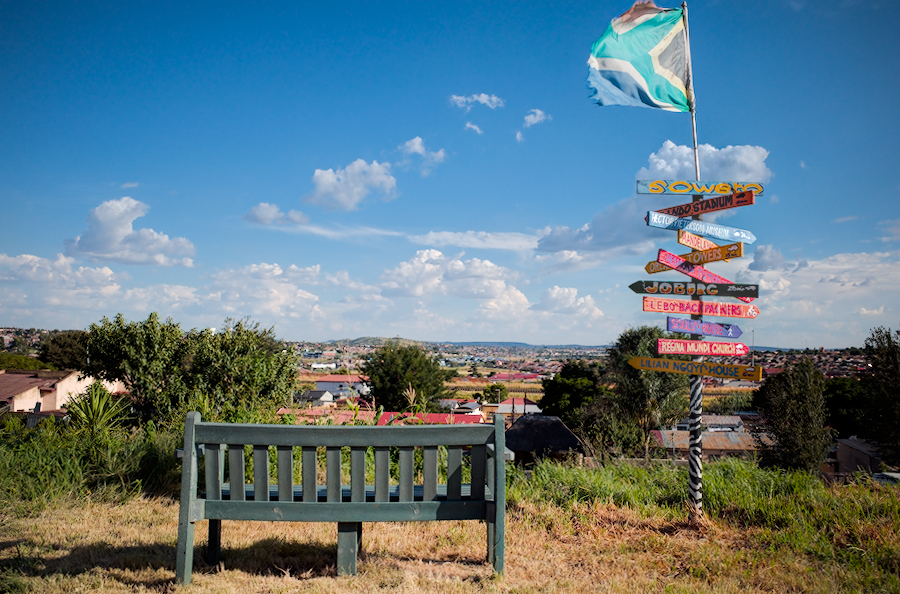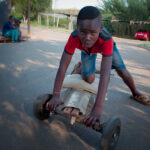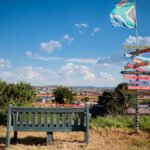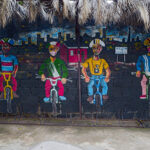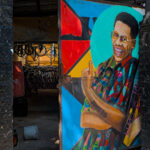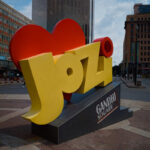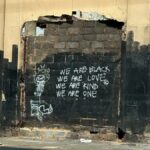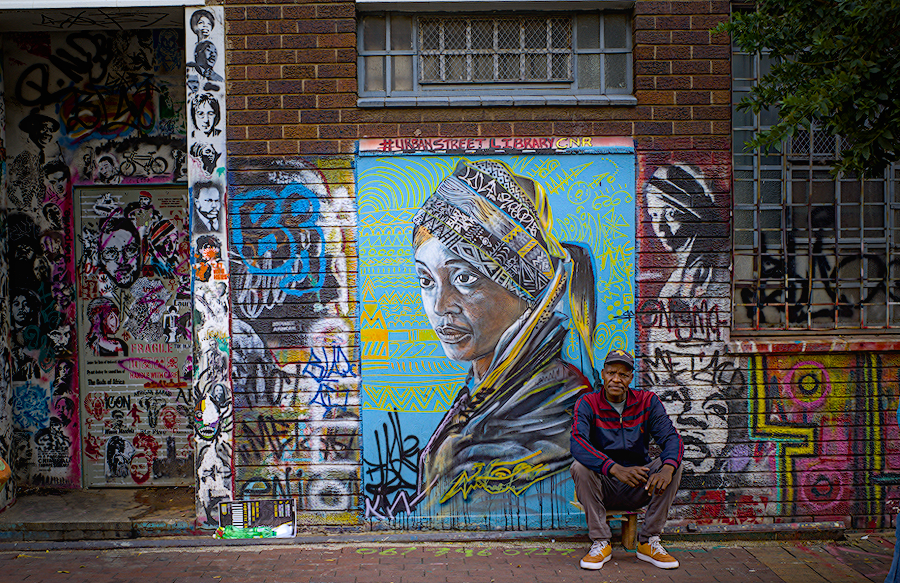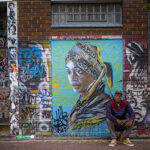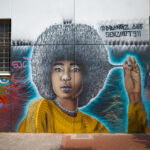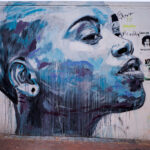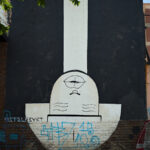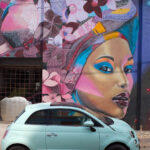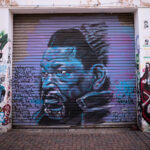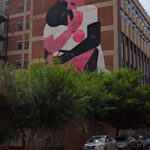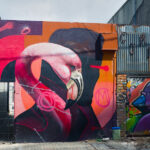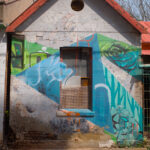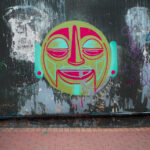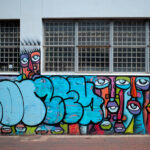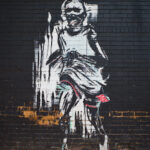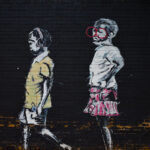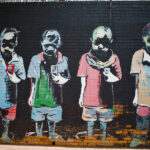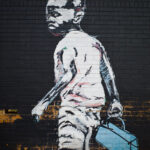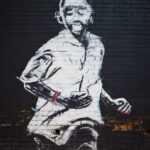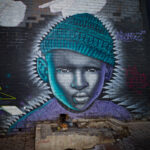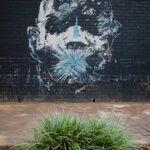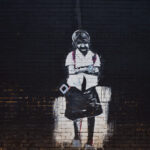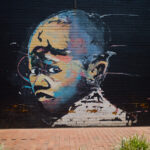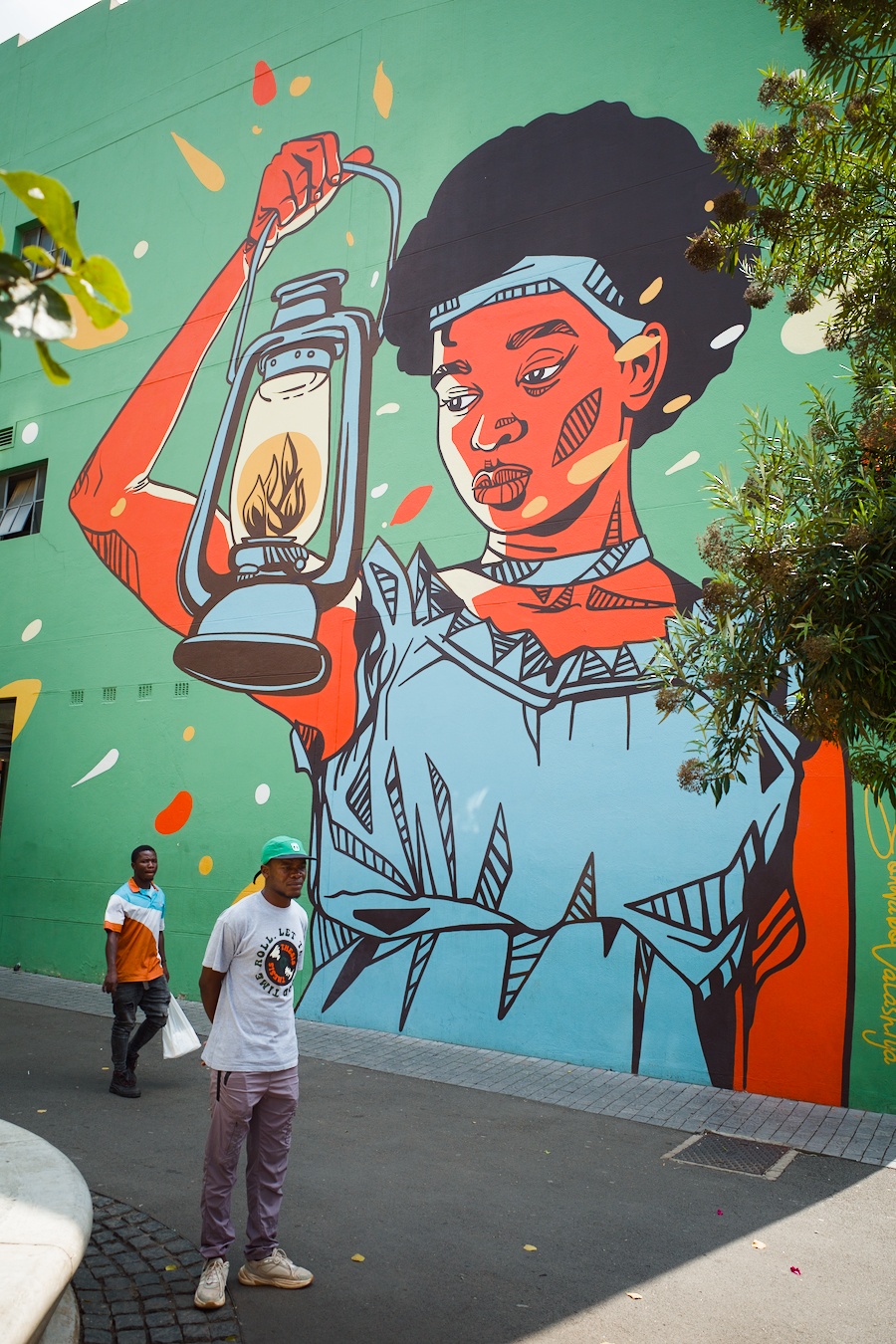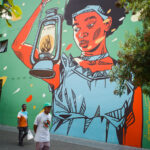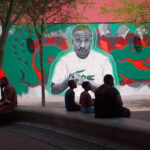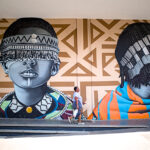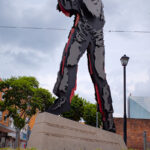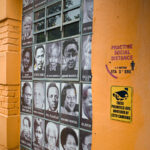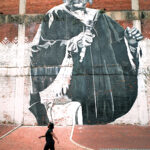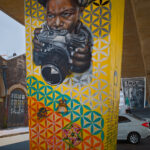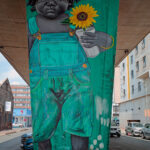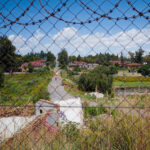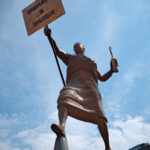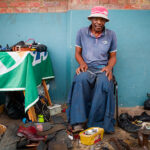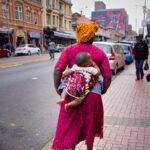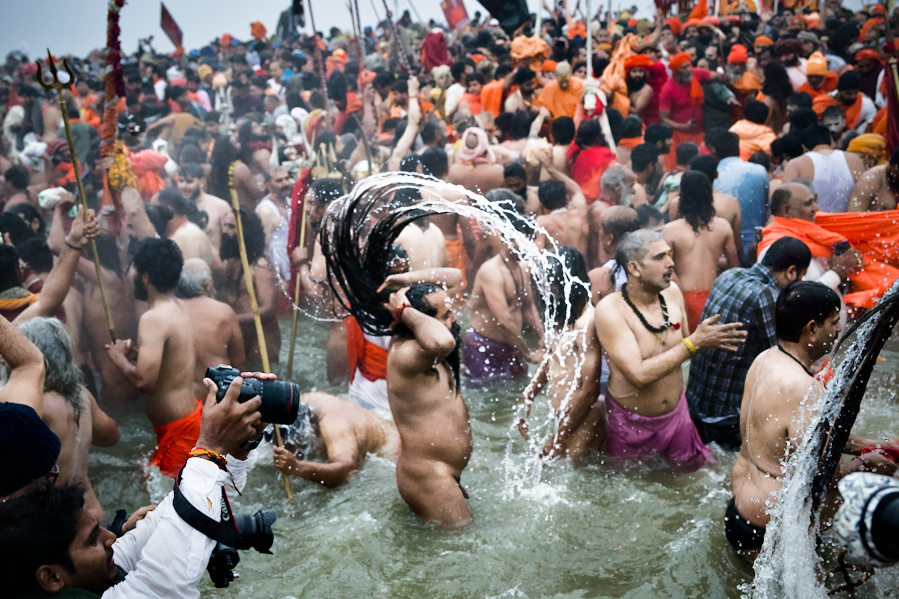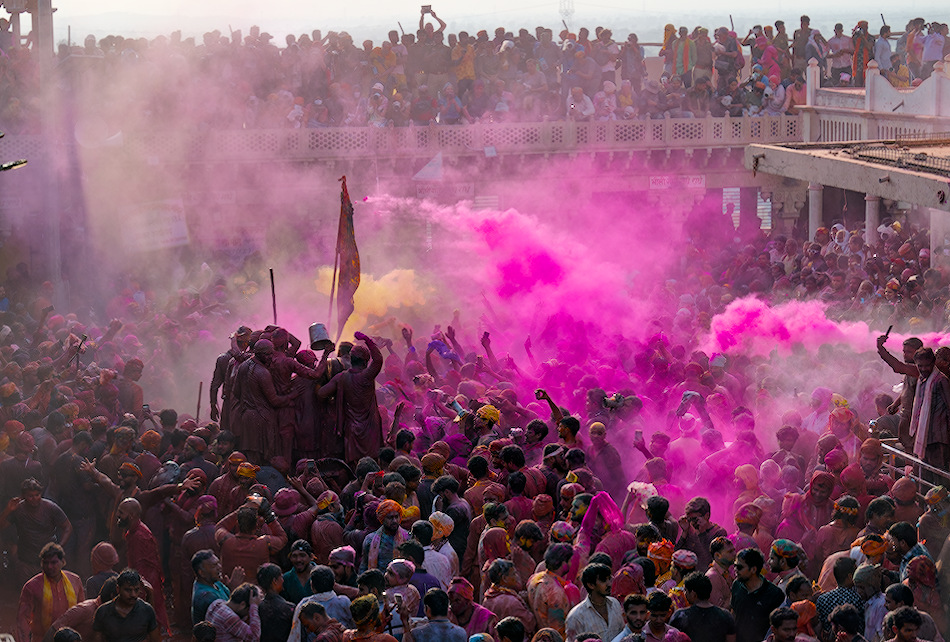Hoping for hope in Joburg – A photoblog
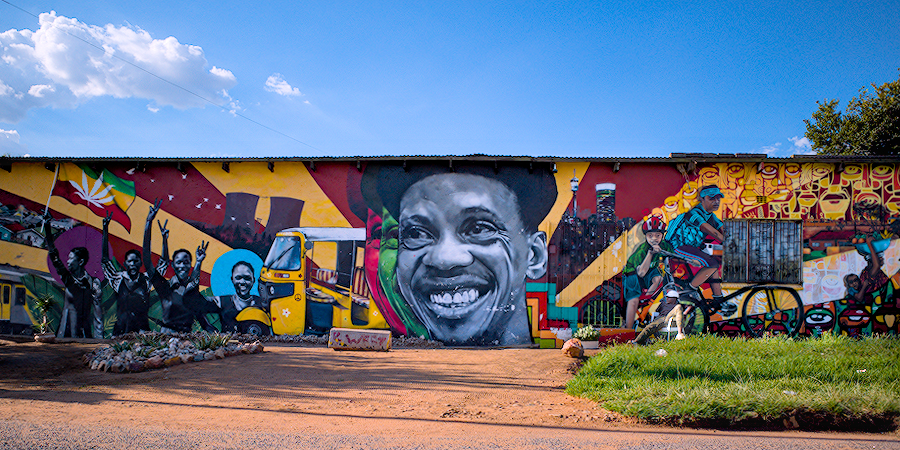
I relaxed as I landed back in Mumbai from Johannesburg, I wasn’t hyper-vigilant anymore. I could trust that I wont be mugged at a traffic light and there wont be a day-light car jacking, even though I could still fall into some open ditch left by BMC in the middle of the road or be stuck in traffic and be forced to breathe in the pollution – but at least it wont be personal. No incident happened to me in Joburg, but I couldn’t shake off the anxiousness of it there. Small talk there was about the crime, like it is about traffic jams and dug up roads in Mumbai.
It is normal for every decision here to be based on hyper-vigilance and sense of insecurity – which car to buy (the ones that don’t get carjacked much), which area of live (where there is less crime), where to cross the road (never at the traffic-light where you can be accosted to hand over your valuable (so maybe cross in the middle of the road), till what time will you stay out, is someone following you etc. Everyone goes about living as if these are not major issues. Gated communities and electric fences are everywhere, and those with means have a great life behind those walls.
In South Africa, you can feel the social tension in the air. The scars of apartheid run deep, and the legacy of apartheid seems frozen in time. Land ownership and occupancy is still mostly held along race lines, and the blacks still don’t feel fully integrated into the economic system. The unemployment rate of more than 40% is increasing the inequality across the society.
Contrary to general advice, I decided to brave a city walk in the inner lanes, and the central business district and do some street photography. I was anxious as I tried to find the pickup=point and locate my Guide. We had agreed to meet at a cafe, and I was entering into a bit of the unknown here. My guide was polite, knowledgeable and a thorough professional, and he put me at ease. Two more people who were supposed to join, but they cancelled so it was just him and me.. We decided to walk through the neighbourhood of Maboneng and Central Business district – both are worlds apart, and are alternative destinies that this country could have. Maboneng shows what is possible with a good intent, and the Central business district shows how things can go wrong.
Maboneng is an incredible story of the power of art to transform lives.
The area of Maboneng was once known only for it crime and poverty. It has now become the art and culture hub of Joburg, all because of the initiative and vision of a young entrepreneur – Jonathan Liebmann. He bought a few abandoned buildings in the area, refurbished them, attracted business to the area, invited artist to the create their masterpieces on the walls. And the magic of art seems to be working. The tourists are coming, investments are slowly coming in, locals are getting a chance to start small business catering to the new demands, and a poor neighbourhood is slowly changing into a hip part of the city. It’s a great case-study in urban rejuvenation, and the impact that art can have on people’s lives.
The art on the walls moved me emotionally. Part of the impact was the artistry, but a bigger part was possibly the contrast with the environment in which they existed. These artists had created beauty in the middle of desperation and deprivation. It was a reminder of all that is beautiful in life, and gave hope that creativity can sprout anywhere.
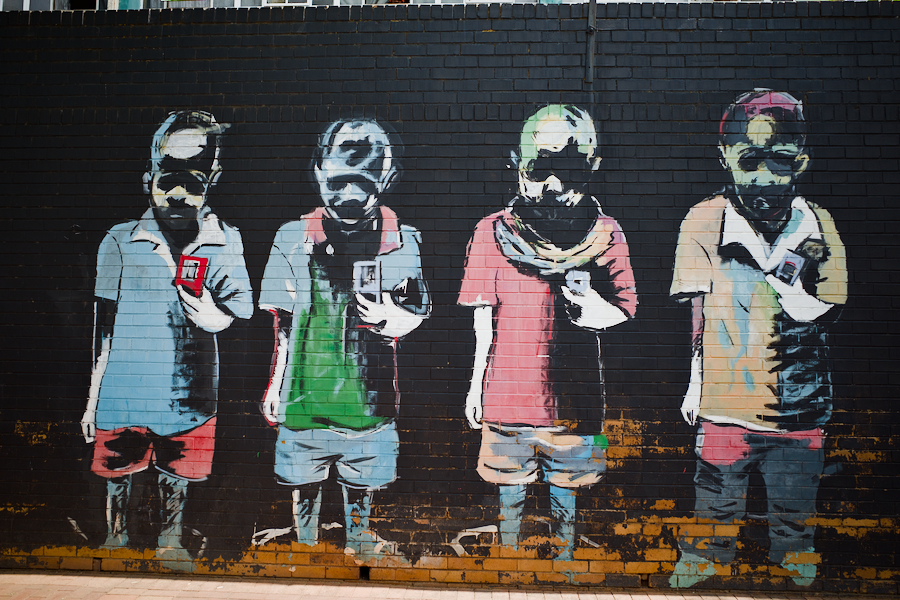
Sublime art on the walls by many local and international artists in Maboneng
The central business district (CBD) was a contrast to Maboneng. It felt like I was walking through into a set of an apocalypse movie. There are entire buildings that have been abandoned and are lying unused. Some companies left as the new regime was coming in, and expected the transition to democracy to be messy – which it wasn’t. Some others left because of the economic downturn due to COVID. Many of these multi-storey buildings have even been ‘hijacked’ by the homeless – with electricity and water supply intact. It was a glimpse of an alternative future of our world, and a lesson in how things can go wrong when social development takes a skewed path, when inequality and desperation grows, and when crime spirals out of control.
I was specifically warned about taking any pictures of people without permission. Not because people are shy, or because of cultural of privacy sensitivities, but because the subject of my photograph may be someone who is wanted by the cops, and I may not want to deal with the consequences of that.
I asked the guide about the legacy of Nelson Madela and what he felt about the transition away from the apartheid. He shook his head, and spoke about other names who were bigger heroes for him – people like Walter Sisulu, Steve Biko and Sol Plaatje. People still debate whether of the pursuit of stability at the time of transition from the Apartheid government came at the expense of radical transformation. Did the inequalities and unfairness of Apartheid get frozen in time, and was justice denied, and was a chance of radical-change squandered? Mandela’s leadership undoubtedly steered the nation away from the abyss of endless civil strife, and was a ray of hope amidst the darkness of Apartheid which that the country had lived through for 50 years. But those trusted with carrying that opportunity ahead have surely faltered, and have put into question the entire approach. The country still needs to heal from its trauma of Apartheid to realise its full potential.
Amid the problems and struggles of the city, there are many signs of resilience too. The younger generation is full of ambition – they are hustling and navigating multiple jobs while grappling with their identity. It’s a young nation, and the youthful energy is waiting to be tapped. And above all, there is widespread impatience with the status-quo.
I left Joburg feeling hopeful for its future. Its restless youth will find its voice soon. The success here may have a much simpler measure than any economic metric – if some day the streets are buzzing with intermingling of people across races, and when there is acceptance and acknowledgement of each other in public spaces, and one feels safe walking down the street. So many things have to go right for it to happen. But this will be the real freedom, for which so many generations have fought here.

